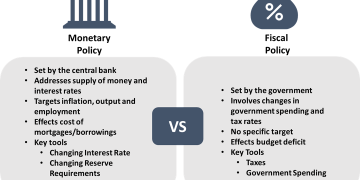Introduction
In recent years, financial markets have evolved at an unprecedented pace. Traditional stock markets, once the primary focus of global investors, now share attention with the rapidly expanding cryptocurrency ecosystem. Each offers unique opportunities, risks, and investment strategies. While stocks represent ownership in established companies and are regulated under well-defined frameworks, cryptocurrencies embody the frontier of digital innovation and decentralization. For modern investors, the challenge is no longer whether to choose one or the other, but how to balance exposure to both in pursuit of growth and resilience.
This article examines the emerging opportunities in both the stock and cryptocurrency markets. It provides a detailed yet accessible overview of current trends, promising sectors, risks, and potential strategies for navigating this dynamic financial landscape.
The Current Landscape of Stock Markets
The stock market remains a cornerstone of global finance. With decades of regulation, established valuation methods, and liquidity, it offers a foundation of stability compared to newer asset classes. Yet, even within the stock market, profound changes are underway.
1. Technology and Innovation
Technology remains the dominant growth driver in equity markets. Cloud computing, artificial intelligence (AI), and cybersecurity are experiencing rapid adoption. Companies like Microsoft, Google (Alphabet), and NVIDIA are expanding their influence across industries. These firms provide investors exposure to technological megatrends shaping the future of the global economy.
2. Renewable Energy and ESG Investing
The push toward sustainability and carbon neutrality has created vast opportunities in renewable energy. Solar, wind, and battery-storage companies are attracting both institutional and retail investors. ESG (environmental, social, and governance) criteria are also reshaping capital allocation, rewarding firms that prioritize sustainable practices.
3. Healthcare and Biotechnology
Advances in genetic engineering, telemedicine, and personalized treatments are fueling growth in the healthcare sector. Post-pandemic, healthcare innovation is not only a defensive play but also a growth story, with companies pioneering breakthroughs in mRNA vaccines and AI-driven diagnostics.
4. Emerging Markets
As global economic power shifts, emerging markets such as India, Southeast Asia, and Africa are drawing attention. Young populations, digital adoption, and expanding middle classes create compelling long-term growth prospects, though risks like political instability and currency fluctuations remain.
5. Dividend and Value Stocks
For conservative investors, dividend-paying stocks and value-oriented companies continue to provide stable returns, especially in volatile macroeconomic conditions. These stocks often act as a hedge when growth sectors face corrections.
The Rise of Cryptocurrencies
Cryptocurrencies, despite their volatility, have established themselves as a legitimate asset class. Their underlying technology—blockchain—offers transparency, security, and decentralized trust. While Bitcoin and Ethereum dominate headlines, the broader ecosystem is rich with opportunities.
1. Bitcoin: Digital Gold
Bitcoin is often compared to gold due to its limited supply and decentralized nature. It has become a store of value for investors seeking protection against inflation and currency debasement. Institutional adoption, from ETFs to corporate treasuries, continues to strengthen its legitimacy.
2. Ethereum and Smart Contracts
Ethereum has evolved into a platform for decentralized applications (dApps), powering sectors like decentralized finance (DeFi) and non-fungible tokens (NFTs). Its transition to proof-of-stake (Ethereum 2.0) reduces energy consumption and strengthens scalability, broadening its appeal.
3. DeFi: Redefining Finance
DeFi platforms enable users to lend, borrow, and trade without intermediaries. By replacing traditional banking functions, DeFi opens financial access to underserved populations globally. While still experimental, its growth trajectory suggests long-term disruption.
4. NFTs and the Digital Economy
NFTs represent ownership of digital assets such as art, music, and virtual real estate. Although the hype has cooled, NFTs signal the rise of digital property rights and creative monetization models.
5. Stablecoins and Central Bank Digital Currencies (CBDCs)
Stablecoins pegged to fiat currencies serve as bridges between traditional finance and crypto markets. Meanwhile, governments are exploring CBDCs to modernize payment systems. These innovations signal a fusion of digital and traditional financial systems.

Comparing Stocks and Cryptocurrencies
While both markets offer opportunities, their characteristics differ significantly:
- Regulation: Stocks operate under established regulatory systems; crypto is still developing frameworks.
- Volatility: Stocks are relatively stable compared to cryptocurrencies, which can experience extreme swings.
- Liquidity: Both markets offer liquidity, though crypto trades 24/7 without restrictions.
- Fundamentals: Stocks are valued on earnings, cash flows, and dividends; crypto often relies on network adoption and speculation.
A balanced portfolio may include both, depending on an investor’s risk tolerance, time horizon, and goals.
Strategies for Investors
1. Diversification Across Asset Classes
Balancing stocks with cryptocurrencies reduces overall portfolio risk. For example, allocating 80% to equities and 20% to crypto provides exposure to innovation while maintaining stability.
2. Thematic Investing
Within stocks, investors can target themes like AI, renewable energy, or healthcare. In crypto, themes like DeFi, gaming, or Layer-2 scaling solutions offer growth potential.
3. Dollar-Cost Averaging (DCA)
Investing fixed amounts regularly—whether in stocks or crypto—smooths out volatility and reduces the risk of poor market timing.
4. Long-Term Focus
Short-term price swings are unavoidable. Investors who maintain a long-term perspective, particularly in innovative sectors, are more likely to capture meaningful returns.
5. Risk Management
Tools like stop-loss orders, hedging with options, or limiting exposure to high-volatility assets can protect portfolios from sharp downturns.
Opportunities at the Intersection
Interestingly, some companies bridge both markets:
- Publicly Traded Crypto Companies: Firms like Coinbase (COIN) and Riot Platforms (RIOT) offer direct crypto exposure via equities.
- Tech Giants Embracing Blockchain: Microsoft, Amazon, and IBM provide blockchain infrastructure, merging stock market stability with crypto innovation.
- Semiconductor Companies: NVIDIA and AMD benefit from crypto mining demand alongside AI growth.
These hybrid opportunities allow investors to gain exposure to blockchain technology without direct crypto investment.
Risks to Consider
Both markets carry risks that investors must acknowledge:
- Macroeconomic Conditions: Rising interest rates, inflation, or recessions can pressure stocks and crypto alike.
- Regulatory Uncertainty: While stock markets are well-regulated, changing rules still impact sectors. Crypto faces evolving and sometimes hostile regulatory approaches.
- Technological Risks: In crypto, hacks, bugs, or protocol failures can cause losses. In stocks, disruption from competitors may erode market share.
- Psychological Risks: Emotional trading, fear of missing out (FOMO), and panic selling are amplified in volatile markets.
Future Outlook
For Stocks
- Continued digital transformation will fuel growth in AI, cloud, and semiconductors.
- Green energy and ESG investing will dominate capital allocation.
- Emerging markets will provide long-term demographic-driven growth.
For Cryptocurrencies
- Greater institutional adoption will stabilize markets.
- Integration with traditional finance will expand accessibility.
- Innovation in DeFi, NFTs, and Web3 will drive new applications.
- Regulatory clarity will reduce uncertainty, paving the way for mainstream adoption.
Conclusion
The stock and cryptocurrency markets each present unique opportunities shaped by distinct dynamics. Stocks provide stability, dividends, and long-term growth tied to the real economy. Cryptocurrencies, though volatile, represent the cutting edge of financial and technological innovation. For modern investors, the optimal strategy lies not in choosing one market over the other, but in crafting a diversified approach that leverages the strengths of both.
By balancing established equities with selective crypto exposure, investors can build portfolios that are both resilient and positioned for the future. As the financial world continues to evolve, those who embrace opportunities across these two markets may find themselves at the forefront of the next wave of global wealth creation.















































